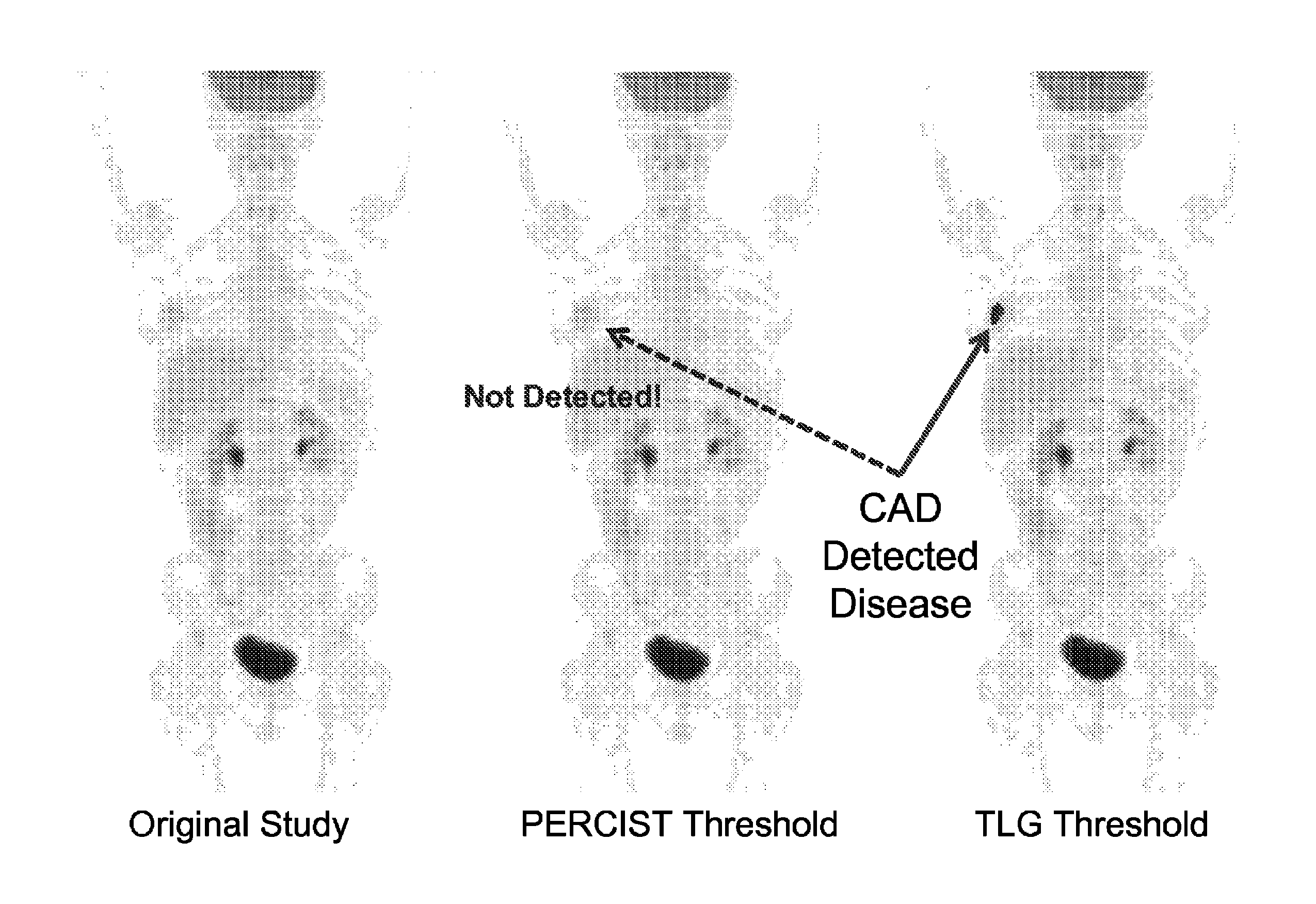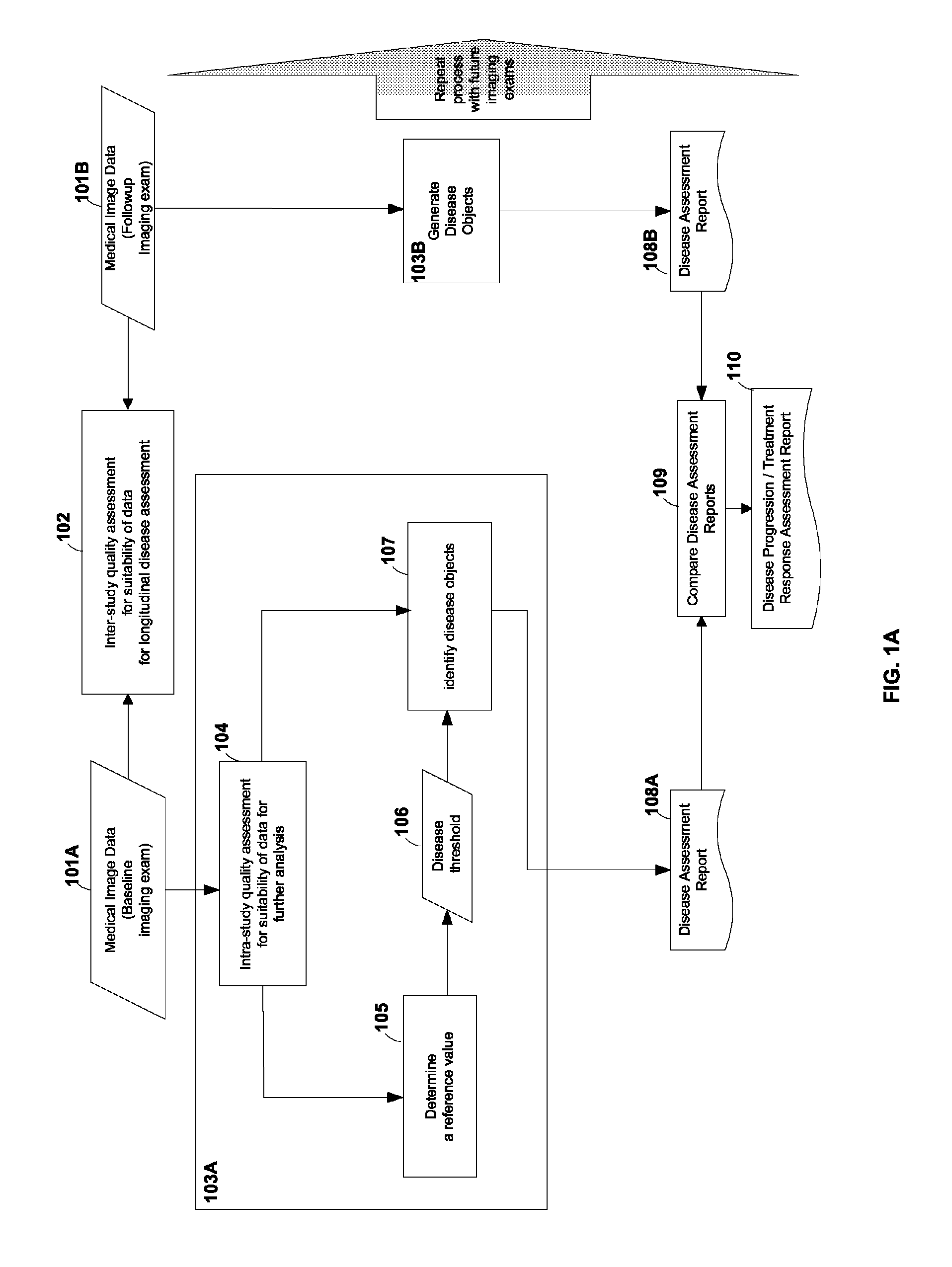Computer-aided detection (CAD) system for personalized disease detection, assessment, and tracking, in medical imaging based on user selectable criteria
a technology of personalized disease detection and cad, applied in the field of medical image processing, can solve the problems of high cost, insufficient statistical power of phase i drug trials to assess antitumor efficacy, and inability to move forward new drugs with a low response ra
- Summary
- Abstract
- Description
- Claims
- Application Information
AI Technical Summary
Benefits of technology
Problems solved by technology
Method used
Image
Examples
Embodiment Construction
[0023]Some embodiments of the current invention are discussed in detail below. In describing the embodiments, specific terminology is employed for the sake of clarity. However, the invention is not intended to be limited to the specific terminology so selected. A person skilled in the relevant art will recognize that other equivalent components can be employed and other methods developed without departing from the broad concepts of the current invention. All references cited herein are incorporated by reference as if each had been individually incorporated.
[0024]FIG. 1A shows a flow-chart according to an embodiment of the current invention. Blocks 101A and 101B may represent medical image data over a time course of a subject under observation. The subject may be a human patient, an animal, etc. For example, block 101A may represent the medical image of a human patient with an abnormality before treatment. The medical image may comprise a plurality of image voxels and may represent m...
PUM
 Login to View More
Login to View More Abstract
Description
Claims
Application Information
 Login to View More
Login to View More - R&D
- Intellectual Property
- Life Sciences
- Materials
- Tech Scout
- Unparalleled Data Quality
- Higher Quality Content
- 60% Fewer Hallucinations
Browse by: Latest US Patents, China's latest patents, Technical Efficacy Thesaurus, Application Domain, Technology Topic, Popular Technical Reports.
© 2025 PatSnap. All rights reserved.Legal|Privacy policy|Modern Slavery Act Transparency Statement|Sitemap|About US| Contact US: help@patsnap.com



